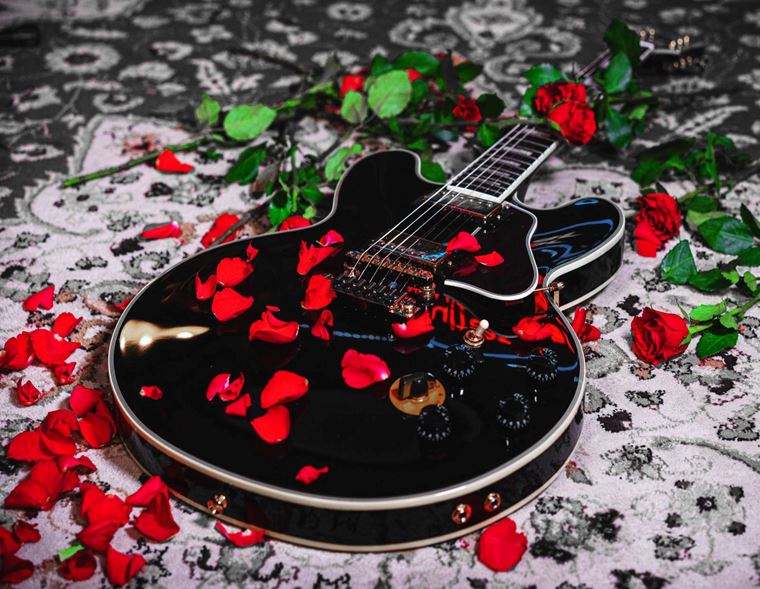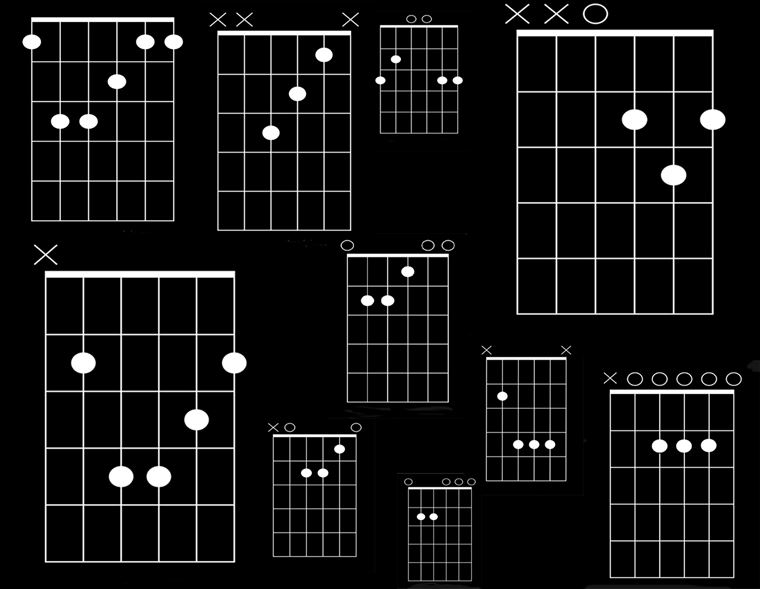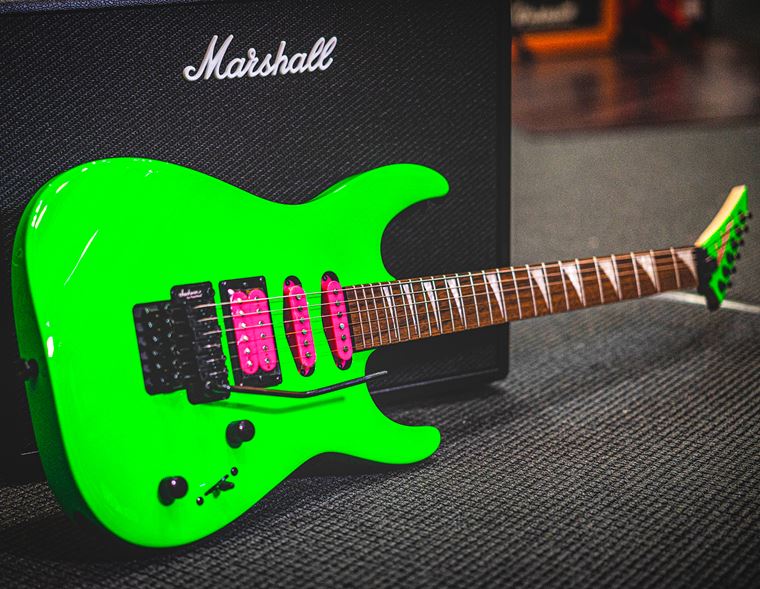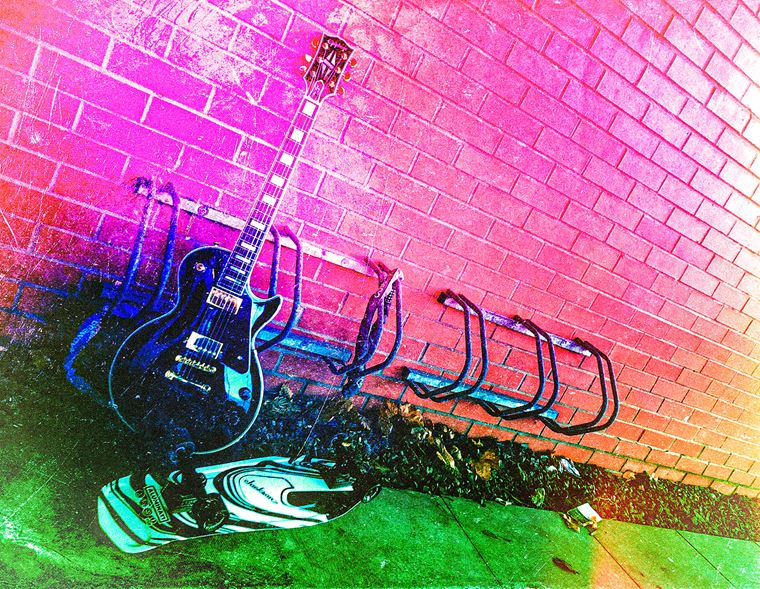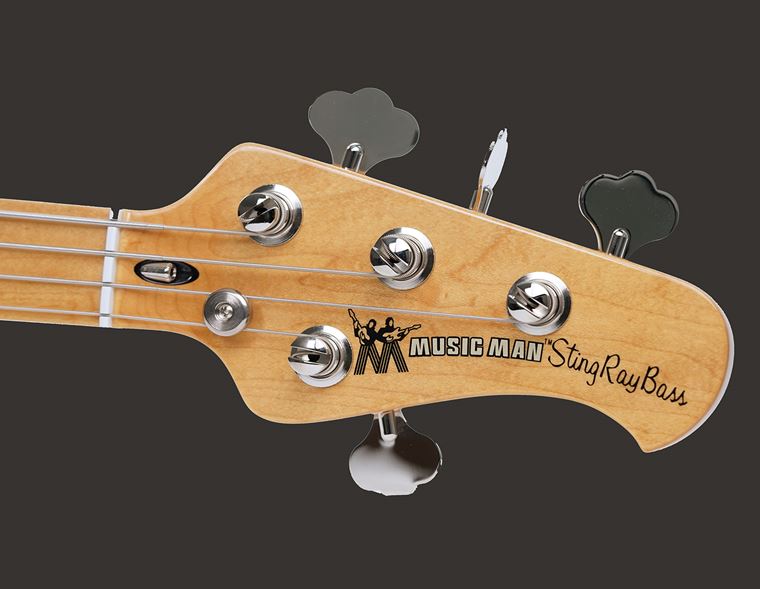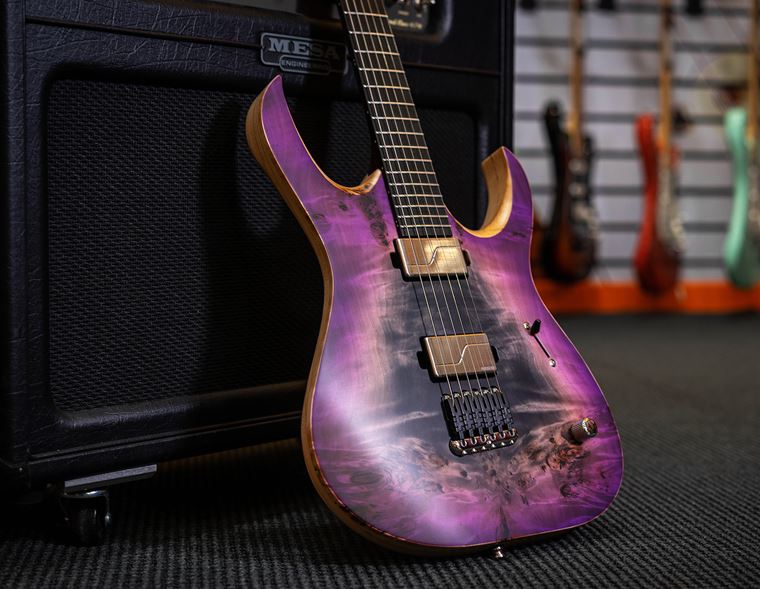Guitar Pedals for Beginners: 19 Best Options
Published on 16 June 2023
Guitar pedals can massively open up your world as a player. From adding ambience and texture to utterly transforming your signal, pedals are an easy and direct way to change and modify what happens when you play a note.
That said, if you’ve never had any experience of using such things, the whole world of pedals can be rather intimidating. Which ones do you need? What order should they be connected? How do you set them up?
All of these questions will be answered, right here, right now!
Contents
- Choosing your First Guitar Pedal
- Choosing Your Second Guitar Pedal
- Choosing a Delay Pedal
- Choosing a Wah Pedal
- Good Pedal Choices for Guitarists
- Basic Pedal Chain Order
- Patch Cables and Power Supplies

Choosing your First Guitar Pedal
For most of us here at guitarguitar, it seems that the first pedal we all bought was some sort of distortion effect. Be it overdrive, heavy metal or fuzz, our initial foray into guitar effects was some drive pedal or another.
Why? Well, the obvious answer is that distortion is loads of fun! It’s instantly gratifying to stomp on a pedal and have your guitar sound go ‘full nitro’! Distortion is also a fundamental part of any player’s tone, and we don’t always have the options we want in whichever practice amps we have. Even with today’s digital practice amps - which often come loaded with countless tone selections - it’s fun to pick out a distortion pedal anyway. A distortion pedal allows you to be selective about your sound, dialling in different varieties of gain and EQ from the controls and testing them with a well-aimed riff or two.
So, which one should you go for? There are so many! Well, we think it depends on what types of music you primarily want to play. Speaking simply, there are four main groupings of distortion pedal, which are:
Overdrive pedal: a lightly distorted tone for blues and classic rock. The most popular examples of an overdrive pedal might be the Ibanez Tube Screamer, the Electro-Harmonix Soul Food (this one is also a very good price) and the Boss Blues Driver.
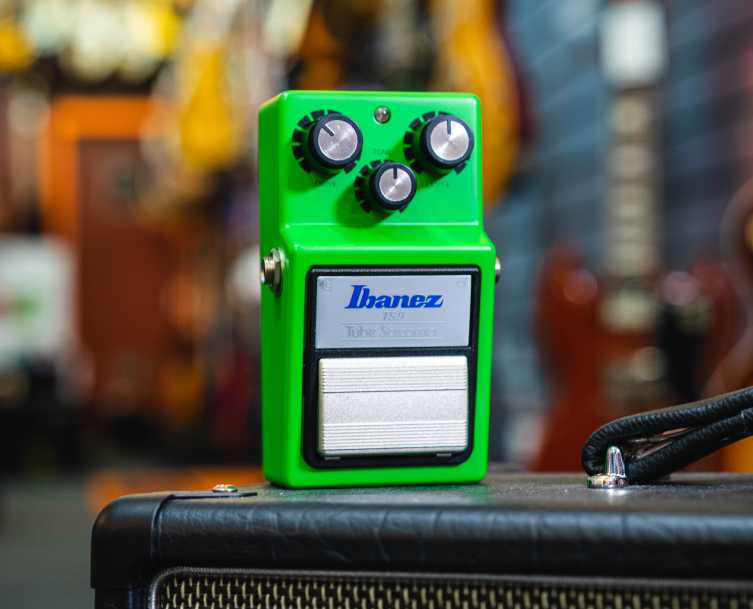
Distortion pedal: harder, more saturated tone than an overdrive pedal, it just goes a bit further into the heaviness, so to speak. Popular choices could include the Boss DS-1, the ProCo Rat and the Suhr Riot.
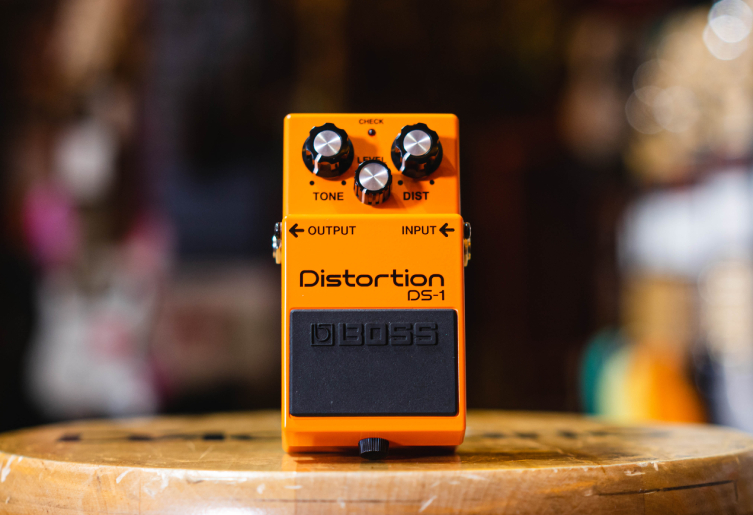
High gain/Metal distortion: the heaviest type of distortion that seeks to emulate massively overdriven amplifiers. Heavy metal pedals use very high levels of saturation in terms of gain (overdrive) and sound deliberately dramatic. The Boss MT-2 Metal Zone is a bit of a classic for this type of sound, but the Solar Chug pedal is also very much worth investigating.
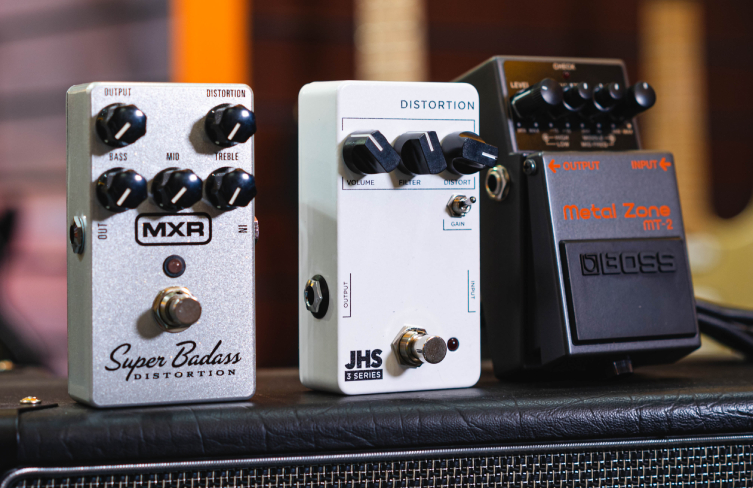
Fuzz: fuzz is a little different since it is quite deliberately abrasive sounding compared with the other types of distortion. Fuzzes can sound relatively well-adjusted and friendly, or they can be lairy, woolly monsters that spew out all kinds of harmonic madness.
Fuzz pedals were the original way to drive an amp back in the 60s, and lots of today’s fuzz pedals reference those classic sounds from that era. Whilst there are a number of famous fuzzes out there (we’re thinking of the Big Muff and the Fuzz Face), there are loads of extreme modern ones too (Z-Vex Fuzz Factory etc), so it’s actually better fun to just dive in and try a bunch out.
In terms of which is right for you, it’s a tricky call, so if you’re able to visit a guitarguitar store and try a few selections, we’d say that’s the way to go. If that’s not on the cards, it’s worth knowing that many fairly high gain distortion pedals can often still be coaxed back into tamer overdrive zones for diversity. Therefore, picking a distortion in the middle of the ‘extremity-ometer’ and just keeping the gain control very low could be a real win for you. MXR make a lovely range of drive pedals that include Badass models that always impress. The JHS 3 Series has a selection of drive pedals that will be a worthy addition to any collection.
Choosing Your Second Guitar Pedal
So, you’ve picked your distortion pedal and you love it, but now you’ve been bitten by the bug and want another! What would be a fantastic choice for a second pedal?
After much deliberation and petty arguments, we’ve arrived at an answer, but it’s actually two different options. Basically, we think your second pedal should either be a delay or a wah pedal. They are massively different, but equally important, depending on where you want to take your playing first. We say ‘first’, because we reckon it’s a safe bet that you’ll soon have both of these pedals on your floor!
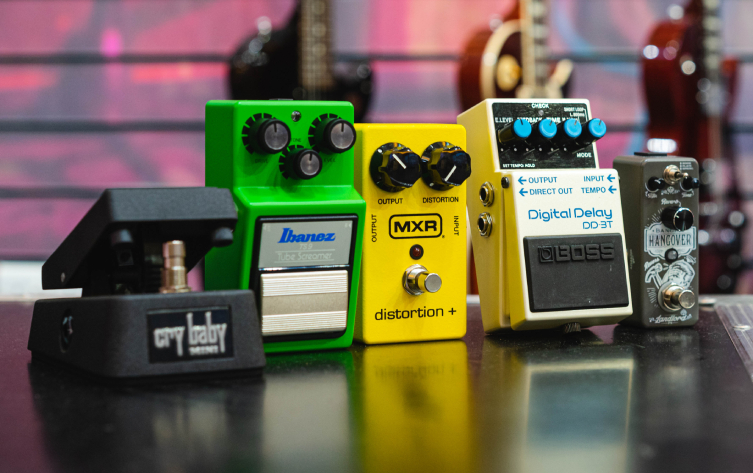
Choosing a Delay Pedal
If you opt for a delay pedal, there are (get used to this) tons of options. Digital, analog and tape-style delays all exist in various permutations, often with extra features that all sound quite exciting. What to do? If you want our advice - and we’re presuming you do since you’re currently reading this guide - we’d say that it’s pretty hard to beat a Boss DD delay unit such as the current Boss DD-8. It’s a straightforward digital delay with lots of fun modes, and Boss’s iconic pedal design makes the unit easy to understand and operate. Digital delay sounds are clean and clear, which we think is the best way to get started with the effect. Plenty of pros swear by Boss delays (Tom Morello and Dave Navarro spring instantly to mind), so it’s not something you’ll need to upgrade any time soon either!
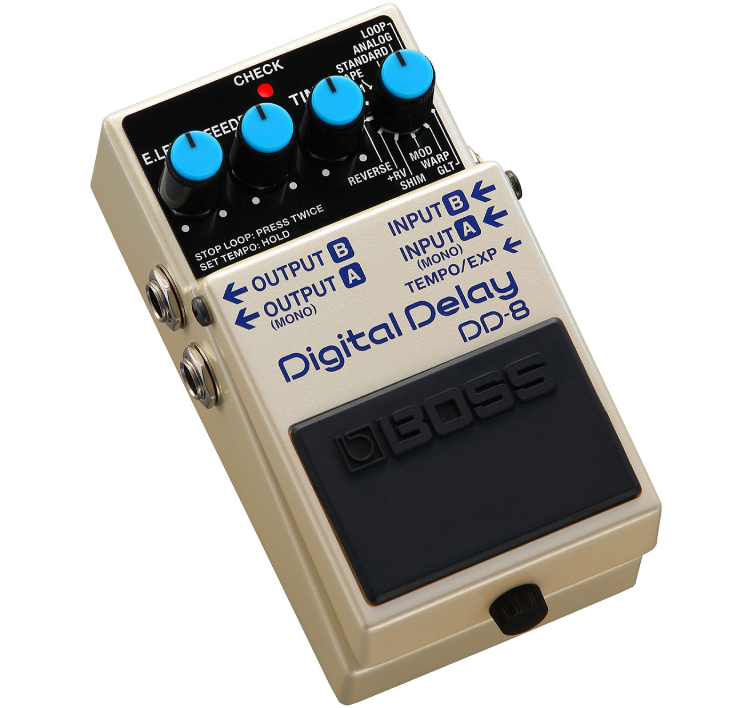
Choosing a Wah Pedal
If you’d prefer to investigate the tonal opportunities presented by the wah pedal first, then we fully understand. It’s one of those effects that everybody tends to use in their own special way, and there’s a ton of mileage in there for the curious guitarist.
A wah pedal, at its most basic level, is a tone control with accentuated frequencies, which you can control in real time with your foot. Rock it forwards and the tone sharpens; bring your heel back and the sound gets woolier and darker. From this simple set up, you can get a huge range of controllable sounds from your guitar, from noises that are weirdly like human vocals, to quasi-synthesizer tones, 70s cop show soundtracks, and all points in between.
As you’ll have already seen, there’s a massive selection of pedals out there, and wah pedals (they used to be called wah-wah pedals but culture seems to have dropped one of the ‘wahs’) are no exception. There are loads, and many of them offer extra features such as built in distortions, controls for altering the frequency focus of the ‘sweep’ (the range covered by the travel of the pedal), gain boosts and other ‘extra’ additions. For now though, we’d say forget all that and grab the world’s most popular wah pedal: the Dunlop GCB95 Crybaby. It’s simple, it’s robust, and it sounds great. You don’t actually need much more than that from a wah pedal, and even though we love all of the custom graphic finishes some pedals get, we concede that such features obviously have no bearing on the sound!
Good Pedal Choices for Guitarists
Ok, you’ve got your first two pedals and now you’re hooked. You are deep into this now, and you want to commit to a full pedalboard. Good on you! It’s a healthy obsession, okay?
So, what other pedals should you go for? We’ve looked at distortion, delay and wah already, so let’s pick a few more to fill this board of ours…
Tuner: we didn’t talk about tuners earlier because it’s hard to make them exciting, but let’s face it: you absolutely need one! Don’t rely on clip-on headstock tuners (fine for the house but don’t you dare appear on stage with one: it’ll kill your cool quicker than anything else); go for a proper tuner pedal such as the industry standard Boss TU-3. For an excellent value option, you can’t go wrong twitch the Landlord FX Lock In Tuner. Often, tuner pedals can actually act as power supplies too (you connect a daisy chain to the top, but more on that in a second), so that might be a great option for you.
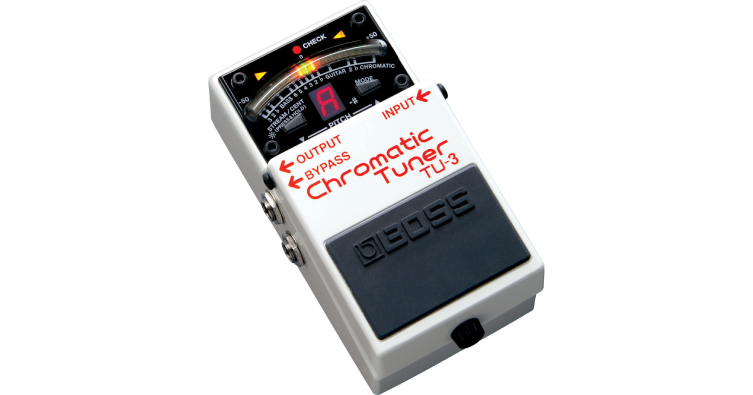
Compressor: Let’s be bold here and say that you don’t necessarily need to have a compressor to begin with. It’ll tighten up your clean/gain volume ratio and at a sheen of ‘production’ to your sound, but that can maybe come further down the line a little. That said, if you want to try compression, the MXR Dynacomp is the best one-stop shop for that!
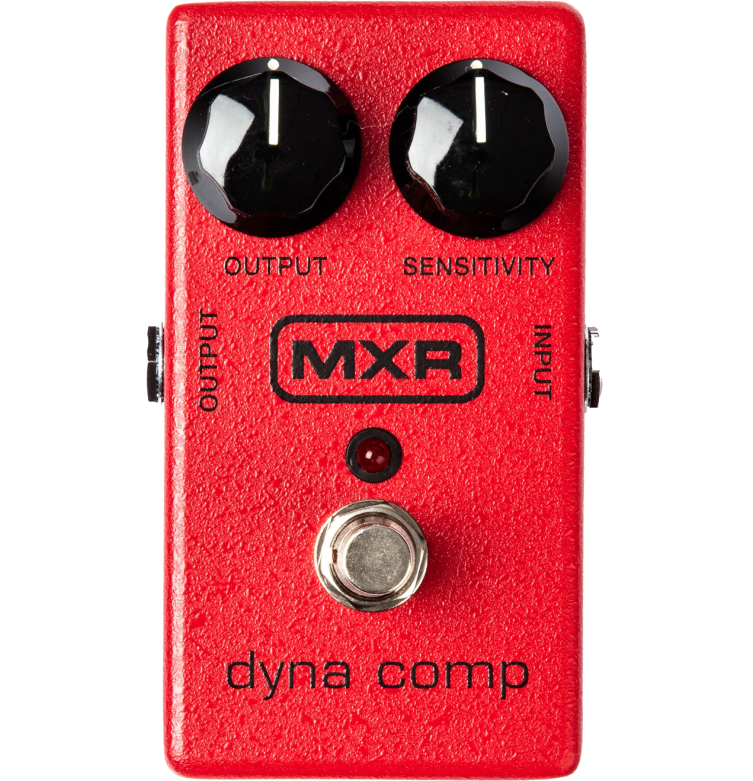
Modulation: this is the area for all the whooshy, ethereal sounds you get from Chorus, Flanger and Phaser pedals. Everybody is going nuts for chorus effects again, but a flanger pedal set a certain way will get you those sounds (it was good enough for Andy Summers, whom most people wrongly assume to have been a Chorus user) and a bunch more, so we’re going to recommend the JHS 3 Series Flanger. To be honest, if you filled your entire board with JHS 3 Series effects (affordable US-built boutique units) it would be incredible, so by all means do that! It just wouldn’t make much of a blog! Anyway, JHS’ Flanger has enough width and depth to cover your underwater, jet engine and pulse rifle noises, so go for it!
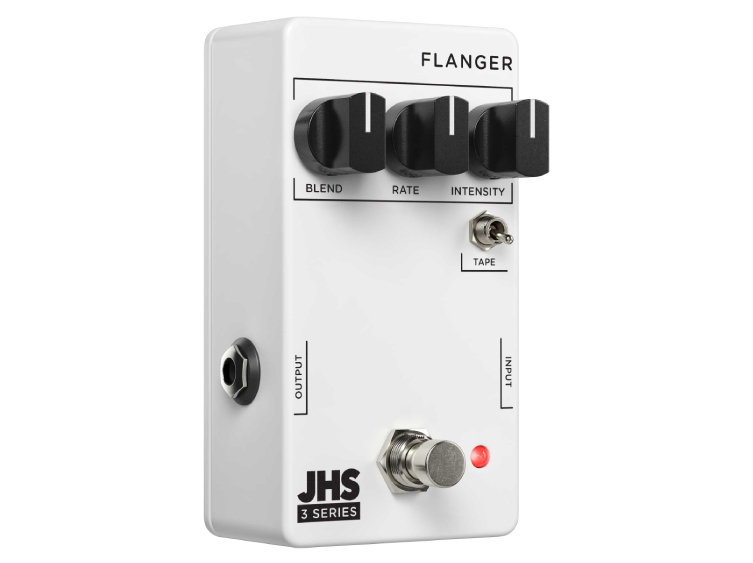
Reverb: If you want both reverb and delay (and why not?) then let’s look at an option or two. Reverb is generally an expensive effect, since the actual circuitry is more complex than the likes of a fuzz pedal, say. For super-cheap lols, the Landlord FX Banging Hangover has a nice, usable range of reverberations that may not be the subtlest, but are definitely great value. For something more complex (and so obviously more expensive), we’d recommend the Walrus Fundamental Reverb. Walrus are another boutique US builder, and their Fundamental range, like the JHS 3 Series, are designed to bring players top quality at affordable prices. This reverb sounds beautiful and has sliders to control it instead of knobs, so we’re in!
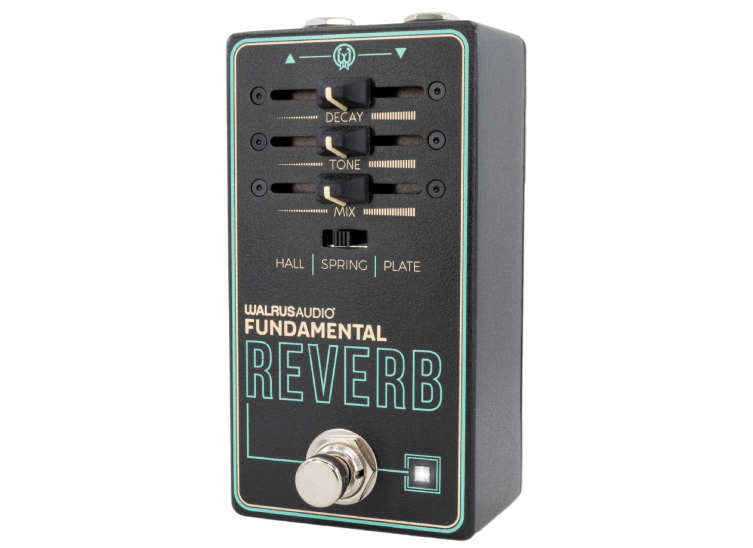
Basic Pedal Chain Order
You’ve selected your pedals and you are itching to create a veritable spaceship on the floor filled with blinking lights and gizmos. There’s nothing like it! So, we’d say that now is a good time to look at the order in which you should place these pedals for best results. We say ‘should’, since you can often find amazing results by ignoring the established rules and following your own path. That said, there is an order that’s generally agreed on to give good results, and this is it:
Guitar > Tuner > Volume > Utility (Noise Suppressors, Compressors etc) > Wah & Pitch Effects > Overdrive/Distortion > Modulation (Chorus, Flanger, Vibrato, Tremolo) > Ambient Effects (Delay and Reverb) > Amplifier.
When building your first pedalboard - be it with a properly made pedalboard or just an empty space on the floor - that is the order to first chain your effects for best results. Within that, it’s up to you how you approach it: do you want your delays to come before or after your reverb signal? Try both and see! Remember, it’s a linear line of sound, where everything is affected by what comes before it. If it sounds good, it is good. Do it!
Patch Cables and Power Supplies
Apart from the pedals themselves, you’ll also require cables to connect the chain, and something to power them all with. Most pedals do accept batteries, but connecting input cables will begin draining the battery straight away, so unless you want to constantly unplug every pedal when you aren’t using them, we think a power supply is easier and less hassle. But first, the cables!
Patch cables are worth a little consideration. Since pedals can have their input/output jacks on either the sides or the top of the unit, making connections can get a little bit esoteric. It pays, therefore, to plan out your preferred pedal layout and then buy different lengths of patch cables to suit your plan. Patch cables can be had in multiple lengths and have either straight or abled jacks, so you can actually be pretty specific about each one. Give it some thought!
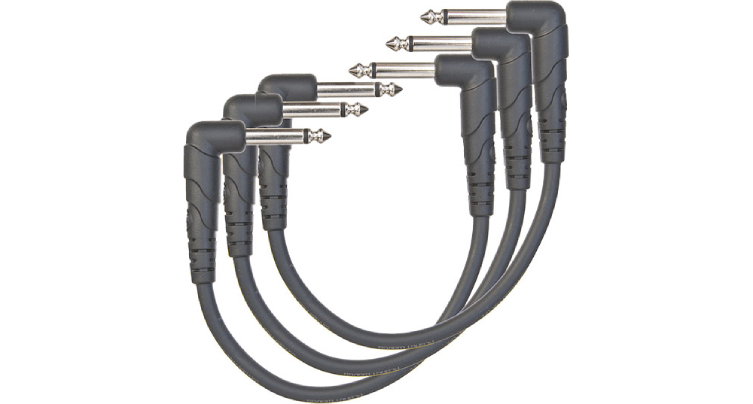
There’s always a little bit of compromise when organising a pedal layout, but do remember: you don’t need the pedals to be physically next to each other, just because they are sequential in the chain, if you get us? Longer patch cables allow the chain to remain as you need it ‘flow-wise’, whilst still allowing you to position the pedals in the physical space you’d prefer them. If you want your delay pedal to sit next to your overdrive, it’s likely that you can manage that, whilst still adhering to the preferred way of connecting them all, which would entail those two being at opposite ends of the signal chain. Just use long cables and get good at using cable ties! It’s your pedal board: have it how you want it!
As for power supplies, you can certainly go for a pro level regulated power supply with individual outputs, but for your first pedal board, we think it’s more than acceptable to choose a simple ‘daisy chain’ style such as the Truetone 1-Spot. These are, as the term suggests, long cables with various connectors daisy-chained along the way, connected at the end of the cable to a single ‘wall wart’ mains plug. You simply thread the daisy chain in and out of your board, using the connections to power each effect. This is another occasion where you may need to adjust your pedal positions so that they can all reach a power connection! You’ll find a way!
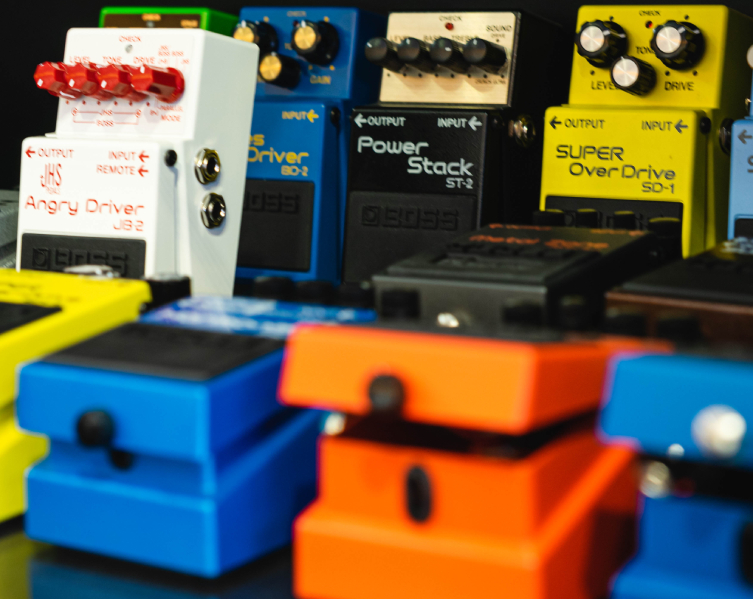
It's The Beginning of a Beautiful Friendship
Getting into pedals is one of the funnest things about being a guitarist. There are new ones released every month, it seems, and there’s always something else around the corner. That said, many pedals seem to look to a few classic examples - the Tube Screamer, Phase 90, Big Muff, Fuzz Face and Klon Centaur are the main culprits - for their ‘inspiration’, shall we say!
The main thing is to have fun, experiment and see how these devices can enrichen your playing time. Whether you are subtle or crazy in your application of effects, it’s all part of the infinite expression that being a guitar player offers! Enjoy it!




